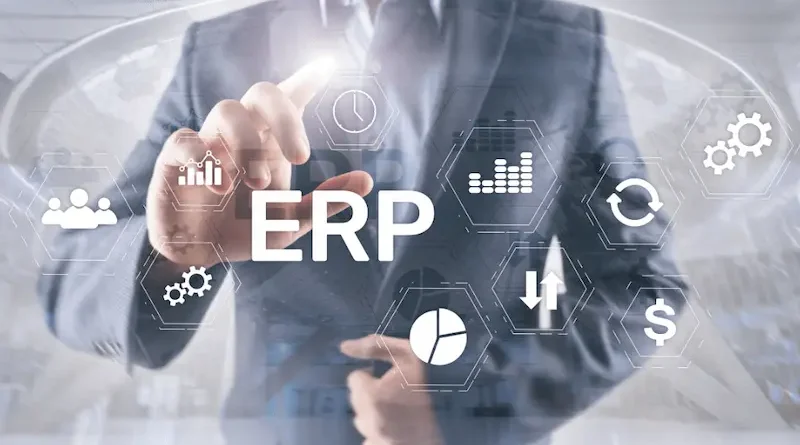The Hidden Cost of Outdated Systems: Why Modern Businesses Need Smarter ERP Solutions
In today’s fast-moving digital world, businesses live and breathe data. Every sale, shipment, and customer interaction feeds into the systems that keep things running. But when those systems are outdated, they don’t just slow you down—they quietly eat away at efficiency and profits. Many companies don’t realize how much time and money they lose because of aging tools that can’t keep up with modern demands.
Success today isn’t about working harder; it’s about working smarter. That’s why more organizations are stepping back to rethink how their technology supports their growth. The focus is shifting to modern ERP solutions that automate tasks, connect departments, and give leaders a clear, real-time view of what’s happening across the business.
1. The Silent Drain of Legacy Systems
Old systems rarely fail all at once. They fade gradually, slowing productivity a little more each month. At first, it’s small frustrations—longer load times, more spreadsheets, or manual data corrections. Over time, those small issues add up to a major drag on performance.
Teams spend hours cleaning up data that should already be accurate. Finance departments scramble to close the books each month. Executives make decisions based on numbers that might already be outdated. It’s not just inconvenient—it’s costly.
Research from Deloitte suggests that businesses relying on outdated, manual processes lose as much as 20–30% of their potential productivity every year. And those numbers don’t even capture the hidden costs: slower decision-making, higher stress, and the inability to pivot quickly when markets shift. These problems quietly erode efficiency, morale, and competitiveness.
2. Why Modern Businesses Are Moving Toward Smarter ERP Solutions
To stay competitive, companies are turning to modern, cloud-based ERP platforms that bring everything under one roof. Instead of juggling disconnected software for finance, operations, and customer data, they’re choosing integrated systems that connect it all.
That’s why many forward-thinking organizations are adopting solutions like Paradigm ERP. By unifying accounting, logistics, inventory, and reporting in a single platform, businesses gain real-time visibility into every corner of their operation. This not only cuts down on repetitive work but also gives leaders the insight they need to make smarter, faster decisions.
Modern ERP systems are built for ease of use. With intuitive dashboards and flexible workflows, teams can track performance, generate reports, and collaborate across departments without depending on IT for every request. And because they’re cloud-based, they adapt easily as the business grows or shifts direction.
The result? Better communication, fewer delays, and a much clearer understanding of what drives performance—something every modern company needs.
3. The Tangible Impact of Upgrading
Upgrading to a modern ERP system isn’t just about saving time or cutting costs. It’s about transforming how a business operates. Companies that have made the switch often see:
- Faster financial closes – Monthly reporting that used to take weeks can now be done in days.
- More accurate data – Automation eliminates errors and reduces the need for manual corrections.
- Better customer experiences – Integrated systems mean orders, service, and support are always in sync.
- Easier scalability – Cloud-based tools grow with the business, whether expanding to new markets or launching new products.
But the biggest benefit might be something harder to measure—confidence. With a single source of truth, leaders can make decisions based on facts, not assumptions. That clarity helps companies stay agile and avoid costly missteps.
4. The Risk of Standing Still
It’s common for businesses to delay upgrading out of fear—fear of cost, disruption, or the learning curve. But holding onto outdated systems is like patching an old roof: it might hold for a while, but the leaks will keep coming.
Legacy software often lacks modern security features, compliance tools, and real-time monitoring. As vendors phase out support, companies are left relying on unstable or insecure systems. That puts both data and reputation at risk.
Meanwhile, competitors that invest in newer technology gain speed, insight, and flexibility. Over time, that gap becomes impossible to close. The truth is, doing nothing isn’t safe—it’s a slow slide backward.
5. Making the Move to Modern ERP
Transitioning to a new ERP system doesn’t have to be overwhelming. The key is taking a strategic, phased approach:
- Audit your current setup. Identify where data bottlenecks or manual work are holding you back.
- Set clear goals. Define what success means for your team—whether it’s faster reporting, fewer errors, or better collaboration.
- Get everyone on board. Involve finance, operations, and IT early so everyone’s aligned.
- Choose the right fit. Pick a platform that aligns with your industry, size, and long-term goals—not just your budget.
- Train your team. Even the best system won’t deliver results without buy-in and understanding.
Tracking performance after implementation—through metrics like order accuracy, productivity, and customer satisfaction—will help prove the value of your investment and guide future improvements.
6. Looking Ahead: A Smarter Way to Grow
Business growth today depends on more than good products or services—it depends on how efficiently you can manage and act on information. A modern ERP system connects the dots between departments, helping teams work together with greater speed and precision.
Clinging to outdated systems only makes it harder to keep up. Upgrading isn’t about chasing trends; it’s about building a stronger foundation for the future.
The right ERP solution gives companies the flexibility, intelligence, and control they need to thrive in a constantly changing market. It’s not just a technology upgrade—it’s a strategic move toward long-term resilience and growth.
Visit the rest of the site for more interesting and useful articles.

